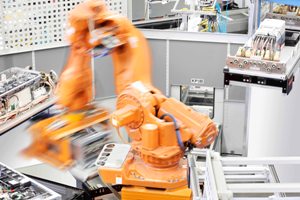When cellphones were first released in the mid-1980s, a handset would set you back $4000 (€3378.98) — the equivalent of almost $10,000 (€8447.45) today. Here, Markus Brettschneider, group senior vice president and general manager for global food & beverage applications for ABB, explains how smaller food manufacturers can take advantage of low-cost digital technology.
When the first cellphone was released in 1983, this breakthrough technology was reserved for high-ranking business people and the social elite. Yet, decreasing technological costs have led to cellphones becoming arguably the most common technology available today. In fact, the UN’s 2014 telecommunications figures revealed that there are almost as many cellphone subscriptions as there are people on Earth.
This is indicative of a technological trend known as quality-adjusted price, which ties closely into the concept of Moore’s law. As technology rapidly develops at a pace that leads to significant performance increases year on year, the cost of that technology decreases at a similar pace.
This presents an important opportunity for smaller businesses to take advantage of newer technologies that were previously only accessible to large companies. In the food production industry, for example, there has been a significant increase in the adoption of digital technologies and software among larger businesses.Yet, food manufacturing companies of all sizes can tap into the productivity and efficiency benefits offered by digitalisation.

The digital food plant
While equipment and robotics have been the key drivers of plant improvement in past decades, the rise of the industrial internet of things (IIoT) has placed greater importance on software and insight. In particular, many plant managers now use digital solutions to monitor the status of equipment to mitigate performance problems.
For example, most food processing plants will have automated at least one part of the production line with a conveyor system. As with any piece of equipment, parts of this system will gradually wear down from repeated use over time. For critical components such as the motor, this leads to a slow decline in performance and risks downtime due to breakage.
Plant managers must therefore undertake predictive maintenance to address any issues before they become problems. To do this effectively, plant managers must have accurate performance data from the conveyor’s low-voltage motors.
Rather than invest in new systems that feature IIoT functionality, businesses can install multi-function sensors to collect and analyse performance data.
For example, the ABB Ability Smart Sensor for motors allows engineers to digitalise food production plants with minimal expenditure. These sensors fit directly onto the motor’s frame and monitor key performance factors such as temperature and vibration. This data is transmitted to the cloud, where it is analysed and reports are generated for plant engineers.
What the data provides is new insight into the health of motors used in production, enabling a shift from reactive maintenance to predictive maintenance. With a simple “stop light” system of green, yellow and red lights, fleet motor status is simple to assess.
Just as cellphones are no longer exclusive to the likes of CEOs of listed companies, digitalisation is not reserved for large food production businesses. By investing in the right equipment, plant managers can start integrating the benefits of digital technology at a pace and budget that meets their production.
The author of this blog is Markus Brettschneider, group senior vice president and general manager for global food & beverage applications for ABB.
Comment on this article below or via Twitter: @IoTNow_OR @jcIoTnow










